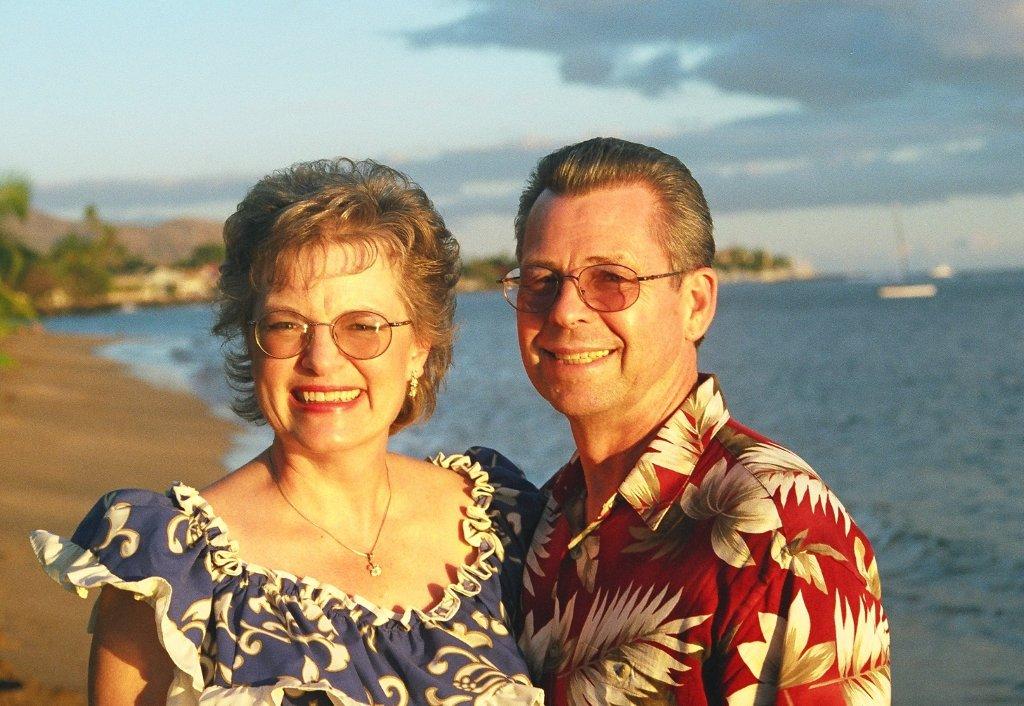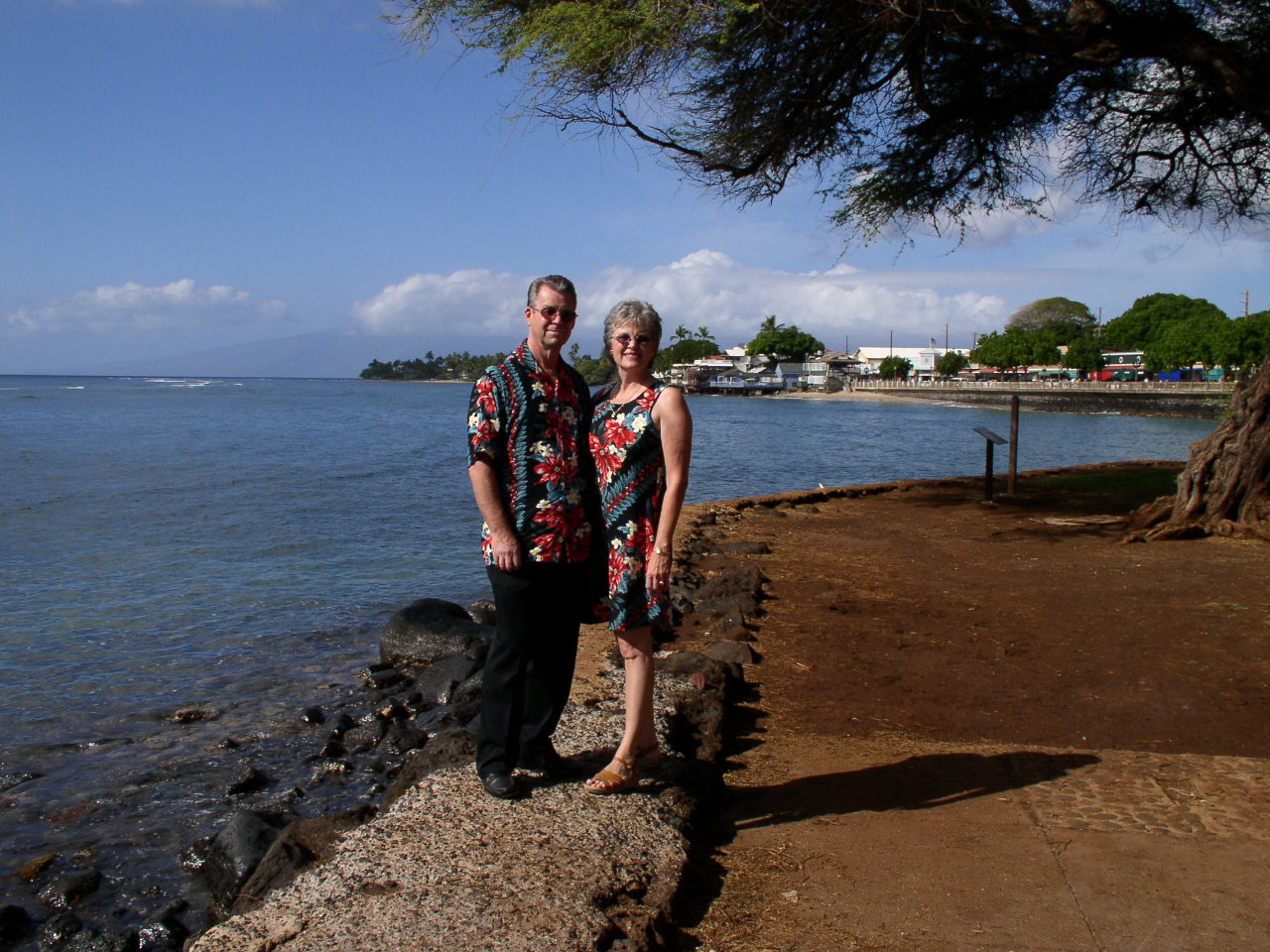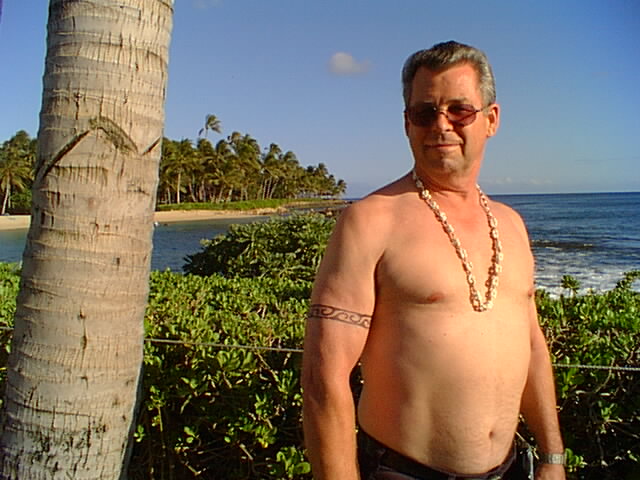| Lady Justice Gets Leid

The beautiful Hawaiian Islands seemed like the perfect place for Walt and Maggie to be married, but in Lady Justice Gets Leid, ancient artifacts, political zealots and a tiny lizard drag the honeymooners from their posh hotel into the steamy rain forest and an icy cave inside a dormant volcano.
Willie and Mary travel along as the best man and bridesmaid, but are these wacky friends helpful or part of the problem?
What turns up from Walt's past that turns everything upside down?
Can love survive the challenges of age, the wrath of the ancient gods and a past that neither of them suspected?
$10.00 plus $3.00 shipping
Reader Reviews
LADY JUSTICE COMBO SPECIAL
Available on E-Book!
Click Here For More Incredible Photos!
____________________________________
Author Robert Thornhill and his wife, Peg, lived in Maui, Hawaii for five years, from 2002 to 2007, in a little town called Pukalani situated on the side of the dormant volcano, Haleakala.

In Lady Justice Gets Lei'd, Walt & Maggie are trapped in a burial cave inside the caldera of the ancient volcano, 10,000 feet above the sea.

Bob & Peg loved their years on Maui.

Obviously author Robert Thornhill was a real Hawaiian stud!

Excerpt
Stuffed to the gills, we made our way to the Nelson-Atkins building and wandered by Gallery 222 just as a guest lecture was about to begin.
“I’m so full I can hardly waddle,” Maggie proclaimed. “How about we just go in, sit, and listen while our lunch settles?”
Looking back, it makes one wonder what forces are at play when such seemingly insignificant decisions change the course of our lives. Is it fate, serendipity, blind luck, or something else?
The lecture was titled, “The History and Culture of the Ancient Hawaiians.”
We took our seats along with maybe a dozen others and were greeted by an elderly, gray-haired gentleman who identified himself as Raymond Kalakoa. He said we could call him Uncle Ray.
The exhibit was part of a recently discovered burial site found in a cave opening in a sheer rock cliff inside a dormant volcano. The items on display were new to the world, but the story Uncle Ray shared with us had been passed from generation to generation for centuries.
His story, visually augmented with slides from the beautiful islands of the Hawaiian chain, told of the voyages of the early Polynesians across three thousand miles of open ocean, over three hundred years before the birth of Christ. He told of the colonization of the islands and the social structure of the early Hawaiians with their alii, or chiefs, and their kahuna, or priests.
Each phase of their early history was brought to life by the artifacts that were on display. We could visualize the pounding of the taro plant into poi with the stone mallet and bowl. The magnificent feathered capes, headgear, and kahili of the chiefs bore testimony of their royalty, and the war clubs of koa inset with razor sharp shark’s teeth were a grim reminder that men throughout the centuries have fought one another to the death.
We sat spellbound as Uncle Ray shared the history of his early ancestors. It was more than just an old man telling a story; it was almost as if he were a vessel through which the chiefs and priests from generations past were speaking.
He seemed to be almost in a trance as he spoke, but suddenly his countenance changed, and he looked around the room and stared into the eyes of each listener, one by one.
Finally, his piercing gaze fell on Maggie, and as he stared into her eyes, we heard the words akua and mana.
His gaze shifted to me, back to Maggie, and then to me again.
It felt as if he had used my eyes to gain entry into my soul. It was a sensation I had never felt before or since.
My eyes were locked with his, and he muttered, “Kane, kokua.”
Just as abruptly as it had come, his countenance reverted back to good old Uncle Ray. He thanked everyone for their attendance and hoped they enjoyed the presentation. Then he pointed to Maggie and me.
“You stay!”
After everyone else had departed, he knelt down in front of us.
“My homeland calls to you. It is not yours to understand now, but the day will come. You have been chosen.”
We both sat there dumbfounded.
He turned to Maggie. “You are to be called Hualani.” Then he turned to me. “And you are Kamamalu.”
He reached into a pouch he carried around his waist and removed a small object carved from black obsidian. It was a lizard.
“Take mo’o’ala. He is your aumakua. He will guide you.”
He pressed the tiny lizard into the palm of my hand.
“You go now, but remember my words, and listen in your hearts for the call of the aina.”
He rose and left us alone.
We sat there speechless, trying to make sense of what had just transpired. I could have almost believed it was a dream were it not for the obsidian lizard I clutched in my hand.
Maggie spoke first. “Walt, what just happened?”
“I was hoping you could tell me.”
“Please don’t laugh when I tell you this. It sounds so stupid now.”
“Tell me what?”
“You know I’ve never been to any of the Hawaiian Islands.”
“Right.”
“While Uncle Ray was showing the slides, I had the distinct feeling I had been there before. It was like when I returned to my childhood home for the first time after many years. Everything had changed, but there was an instinctual recognition of places and events. I can’t describe it any other way.”
“Are you as creeped out as I am?”
“Probably more!”
On the way home we did our best to recall every word that Uncle Ray had spoken to us and wrote it all down as best we could.
|